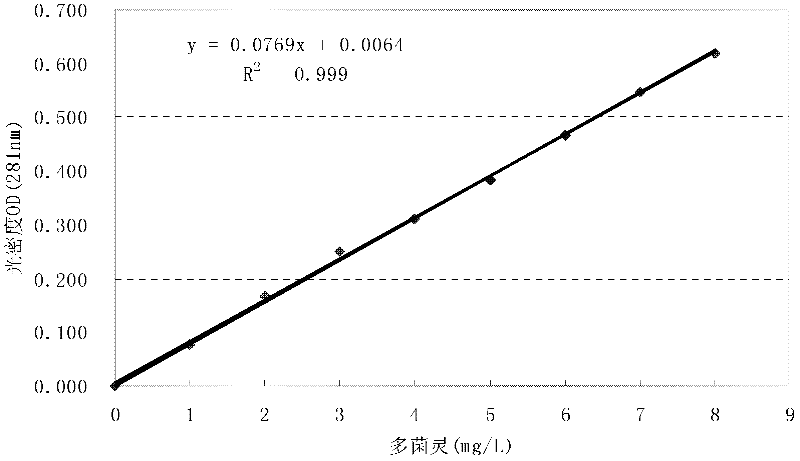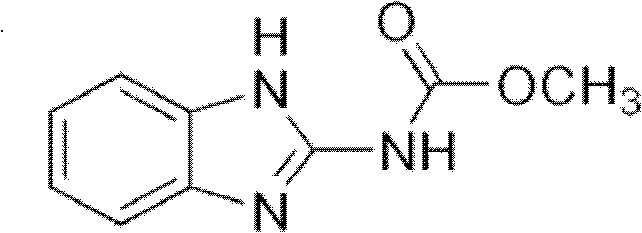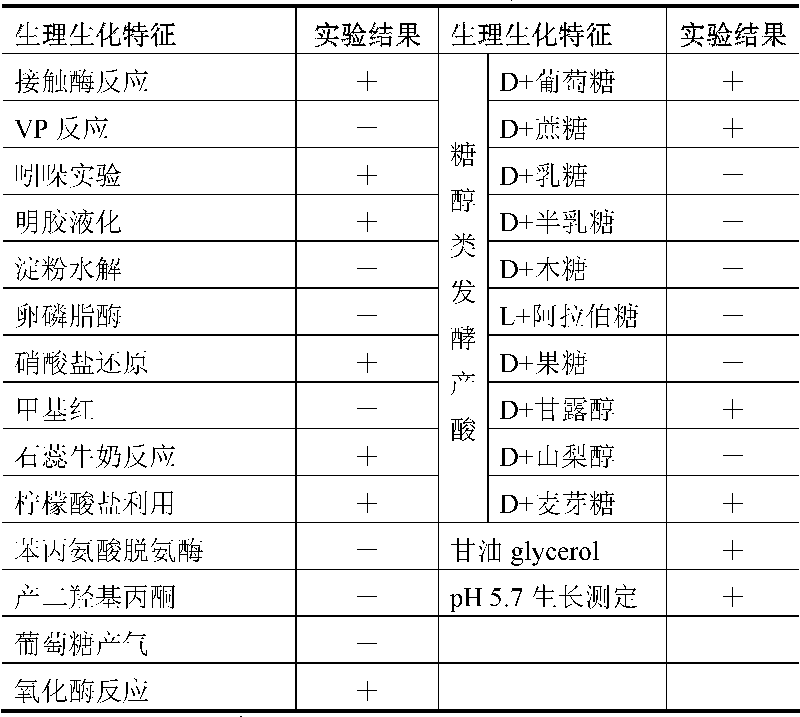Bacteria for efficiently degrading residual pesticide carbendazim and use thereof
A technology of carbendazim and bacterial agent, which is applied in the field of bacteria that can efficiently degrade the residual pesticide carbendazim, and can solve the problems of mammalian toxicity, teratogenicity, and carcinogenicity
- Summary
- Abstract
- Description
- Claims
- Application Information
AI Technical Summary
Problems solved by technology
Method used
Image
Examples
Embodiment 1
[0033] Example 1, Isolation and identification of carbendazim-degrading bacteria DJL1614
[0034] 1. Isolation of carbendazim-degrading bacteria DJL1614
[0035] Add 10 g of soil samples (collected from farmland soil polluted by carbendazim in Beijing, China) to 100 ml of enriched culture solution with a carbendazim concentration of 100 mg / L, culture with shaking at 25°C and 200 r / min for 3 days, and transfer 5 ml of the culture solution to the Inoculated into the enrichment medium with a carbendazim concentration of 200 mg / L, cultured for 3 days, successively enriched, and transferred 5 times to make the carbendazim concentration successively 100, 200, 400, 500, 800 and 1000 mg / L. After the enrichment is completed, take the culture solution and spread it evenly on the same concentration of carbendazim separation medium and inorganic salt medium, and cultivate at a constant temperature of 25°C. After a single colony appears on the plate, pick a larger single colony and transfe...
Embodiment 2
[0056] Example 2. Quantitative determination of the ability of Stenotrophomonas sp. DJL1614CGMCC No.5151 to degrade carbendazim
[0057] 1. Preparation of standard curve for determination of carbendazim
[0058] Prepare a series of standard suspensions with carbendazim standard substance (purchased from Sigma company), according to the feature that carbendazim has a maximum absorption peak at 281nm, measure OD281 by ultraviolet spectrophotometry, and then draw carbendazim assay standard curve, The OD281 determination results of different concentrations of carbendazim are shown in Table 2:
[0059] Table 2 OD281 values of different concentrations of carbendazim
[0060]
[0061] According to the data in Table 1, the equation of the standard curve for the determination of carbendazim is y=0.0769x+0.0064, R 2 = 0.999. Carbendazim assay standard curve as figure 1 shown.
[0062] 2. Quantitative determination of the ability of Stenotrophomonas sp. DJL1614CGMCC No.5151 to ...
PUM
 Login to View More
Login to View More Abstract
Description
Claims
Application Information
 Login to View More
Login to View More - R&D
- Intellectual Property
- Life Sciences
- Materials
- Tech Scout
- Unparalleled Data Quality
- Higher Quality Content
- 60% Fewer Hallucinations
Browse by: Latest US Patents, China's latest patents, Technical Efficacy Thesaurus, Application Domain, Technology Topic, Popular Technical Reports.
© 2025 PatSnap. All rights reserved.Legal|Privacy policy|Modern Slavery Act Transparency Statement|Sitemap|About US| Contact US: help@patsnap.com



